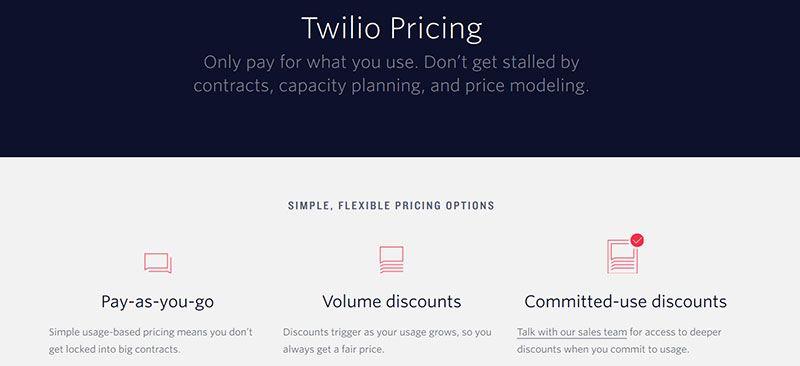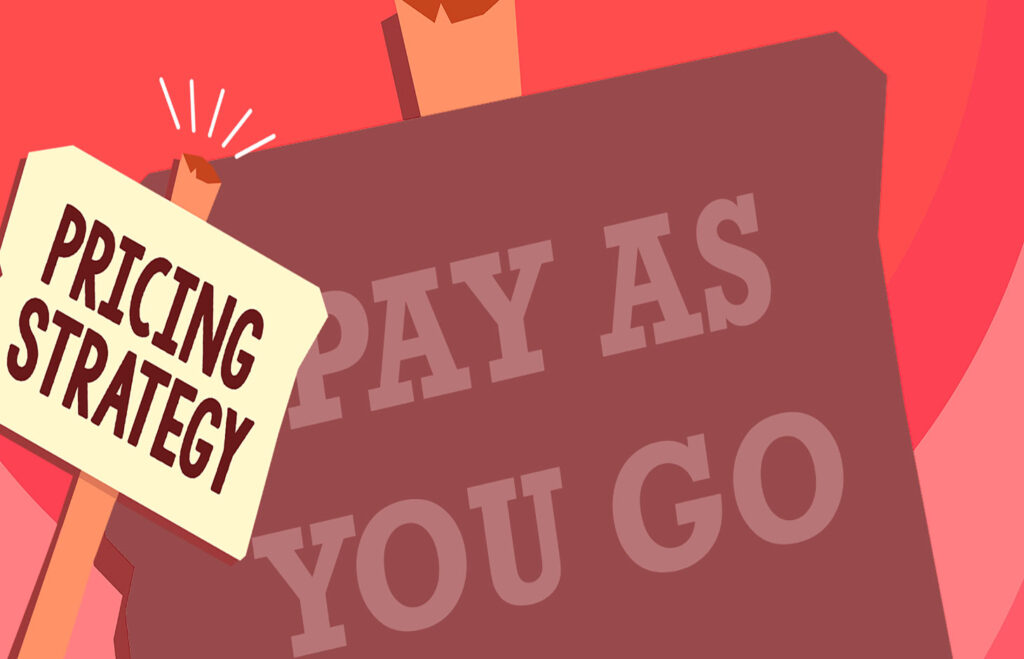There are a lot of concerns to target and address when you’re scaling a subscription business. Pricing is not the least of them. As a very customer-facing customer-impacting element of your business, pricing is something you need to get right.
Unfortunately, there’s no magic answer to direct your business toward its best pricing strategy.
Are you charging too much? Too little?
Have you already managed to land on the perfect pricing model to ensure your business comes out ahead of your competition, or do you still need to make some tweaks to the way you charge?
For software as a service (SaaS) businesses, landing on the ideal strategy can be even more complex—especially in today’s customer-driven sales environment.
- Should your subscription SaaS business offer tiered pricing plans?
- Or should you offer a pay as you go SaaS plan? Giving customers the option to pay for only what they use is becoming more common.
- Alternately, would your customers respond best to a mixture of the two pricing models—a hybrid pricing plan?
If your business is looking for the perfect equation to uncover the answer, you’re bound to be disappointed. Each business is different and pricing is never one-size-fits-all. It takes some work to get it right.
However, the following explores factors that may narrow down the answer and help your subscription business select its ideal pricing strategy.
When is pay as you go SaaS pricing a good option for your subscription business?
1. When an a la carte plan is ideal.
Pay as you go pricing is beneficial when your SaaS business wants to reach a more diverse group of users that would otherwise be put off by general tiered pricing.
For example, a company has several team members that want to use your software. Sometimes there may be 40 users a month, but at other times there may only be 14 users tapping in. And is it fair to expect a customer to pay a flat fee every month, regardless of whether they your service for 10 minutes or 10 hours during that period?
Even more importantly, should you expect one business to pay the same price as another business that ties up 75% more of your bandwidth—including tapping into servers, creating more data, and accessing more support services?
German-based business datapine points out that SaaS businesses need to keep in mind SaaS is not just about technology; it’s an entire business model that’s successful largely due to its flexibility.
One of the strengths of this business model is that it supports flexible pricing options, which can be the winning differentiator for some customers.
2. When tiered pricing doesn’t capture enough traffic
Your SaaS business may cater to a diverse market, from single users to enterprise businesses. If your business chooses to charge solely with a tiered pricing model, you might be bypassed by customers looking for more flexible usage options.
Consider, Twilio—a leading cloud-based communication platform. It offers customers a pay as you go option so they’re only paying for active users and when communication is triggered.
Not only are customers afforded a level of flexibility they wouldn’t get with a more strict or long-term contract, but Twilio also offers volume discounts. Cost savings automatically kick in the more the Twilio product is used.

3. When customers frequently incur overage costs or move between plans
High overage-rates are discouraging for any user, and if another business offers similar features to yours but with usage pricing, you may start losing customers to this seemingly more flexible competitor.
However, if you offer a pay as you go option that allow customers to use your features as needed without hitting them with high overage-rates or bumping them into a higher tier, your flexibility may attract—and retain—more customers.
The pay as you go SaaS pricing model is not only ideal for customers that need select features, but it also captures those who may feel locked-in with tiered pricing. Perhaps they’d benefit from a feature or two from the next higher tier but can’t afford to make that upward leap.
4. When your customers want more control over their monthly spend
Software asset management company Aspera recommends the following to its own users:
“To get the best pricing on your services you should take only what you need. Otherwise, your cloud costs will encourage license waste and eventually drive down revenue.”
While businesses need their services to meet their requirements in order to maximize the utility of the service and enable business and revenue growth, they also want to avoid losing control of their budget—especially if they’re heavily focused on scaling.
Pay as you go SaaS pricing plans give scaling businesses opportunities to play with their costs in real-time based on the reality of their current budgets.
When is pay as you go pricing potentially a bad option for your SaaS subscription business?
1. When your business relies heavily on predictable recurring revenue
A major drawback of pay as you go’s usage-based pricing is it prevents SaaS businesses from having the level of predictable recurring revenue possible with tiered subscription plans. Instead, revenue fluctuates as customers’ needs change.
Predictable recurring revenue helps businesses forecast and strategize their resource allocations, such as personnel or paying for outsourced services.
If revenue changes dramatically from month to month, planning for the future becomes trickier.
2. When data is lost or not captured correctly.
Many SaaS businesses don’t have a good handle on their customers’ data. Sometimes their mishandling is even well-publicized, such as the Amazon Web Services’ data loss over Labor Day weekend 2019.
Nick Mehta, Gainsight CEO wrote, “I’ve met with hundreds and hundreds of leaders of B2B businesses in all walks of life—from financial services to healthcare to on-premise software to hardware and devices—who all long to be ‘like SaaS companies who know everything their customers are doing and are always one step ahead.’
Knowing the majority of SaaS leaders out there myself, I politely smile while hearing this. Meanwhile, my inner monologue laughs ‘if they only knew.’”
And if a business doesn’t have a good handle on its usage data, it’s likely going to encounter problems when billing for that usage. However, there are automated billing software solutions that can help you get it right when charging for usage.
For companies that have a good handle on usage, a pay as you go plan may be ideal. Technology giant Dell recently rolled out a new program called Dell Technologies on Demand.
Citing recent data from Gartner, Sam Grocott—senior vice president of product marketing for Dell Technologies—suggested usage-based pricing will involve 15% of new IT deployments by 2022, as opposed to 1% in 2019.
When hybrid pricing might be your best option
As mentioned earlier, there’s no one-size-fits-all pricing model for any SaaS business. And sometimes, the best option is a wide-open option.
Pricing for some infrastructure products needs to be approached differently because customers derive value from consuming resources, such as bandwidth, and require add-ons throughout their customer lifecycle, such as implementation, training, and support. For businesses like these, a hybrid pricing model may be the best options.
For example, customers pay a recurring subscription fee to access Zoom’s meeting and conferencing services, but they can also purchase one-time and recurring add-ons to increase the value of the service, such as additional participants, recording storage, and webinar capabilities.
While your business’s main subscription plans may make up the majority of the value for your customers—and the revenue for your business—making additional offerings available at a one-time, or short-term recurring cost can give your customers that extra bit of flexibility to meet their needs and thrive with your product.
As your SaaS business scales, adds features and evolves, it should continually re-visit its pricing strategy and consider whether it meets the current needs of the business, its customers, and the demands of the market.
And if it’s the right move, sometimes adding a little flexibility can go a long way toward differentiating your business from the competition and boosting your growth potential.
FAQs about Pricing Strategy
Q: What is a Pay As You Go pricing strategy for SaaS Businesses?
A Pay As You Go pricing model, also known as usage-based pricing, is a strategy in which SaaS businesses charge their customers based on their actual usage of the services. This flexible model allows customers to pay only for the services they use, fostering affordability and scalability.
Q: How can a Pay As You Go model benefit the SaaS businesses?
Pay As You Go pricing is advantageous when your SaaS business aims to target a more diverse group of users who would be deterred by general tiered pricing. It provides flexibility, attracting and retaining more customers. Especially for businesses scaling, this model allows for real-time cost adjustments based on current budgets.
Q: Can Pay As You Go be a risky pricing model for SaaS businesses?
A significant downside to a Pay As You Go approach is it may prevent SaaS businesses from achieving the predictable recurring revenue attainable with tiered subscription plans. Revenue fluctuates as user needs vary, potentially making financial forecasts and resource allocation challenging.
Q: In what cases is a hybrid pricing model suited in SaaS Businesses?
In cases where customers derive value from consuming resources such as bandwidth and require add-ons like training and support during their journey, a hybrid model may work best. This model could include a recurring subscription fee for main services with the option of additional one-time or recurring add-ons.
Q: How does Stripe’s Pay As You Go model work?
Stripe implements a Pay As You Go pricing model by charging for exact usage, catering to businesses seeking flexibility and budget control. The pricing model is competitive and tailor-made to support business needs and budget.
Q: How can the Pay As You Go model impact the competition in SaaS businesses?
Incorporating a Pay As You Go model can serve as a significant differentiator. Although SaaS businesses need innovative features to compete, effective pricing strategies like Pay As You Go can also be a compelling factor in attracting and retaining customers.
Q: How should a SaaS business choose between a tiered and Pay As You Go pricing model?
The final decision depends on the specific nature of the business, its target audience, and market demands. Both models have their pros and cons, and it’s essential to analyze which strategy aligns best with your service offering and business objectives.
Q: Are there tools to assist SaaS businesses in implementing Pay As You-Go pricing models?
Yes, there are automation tools to assist with usage tracking and billing in usage-based pricing models. These software solutions can provide accuracy and efficiency in tracking and billing users based on their exact usage, helping SaaS businesses implement a Pay As You Go model more effectively.








